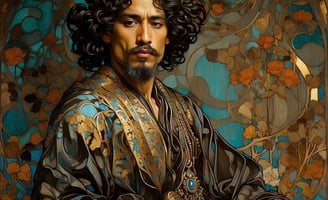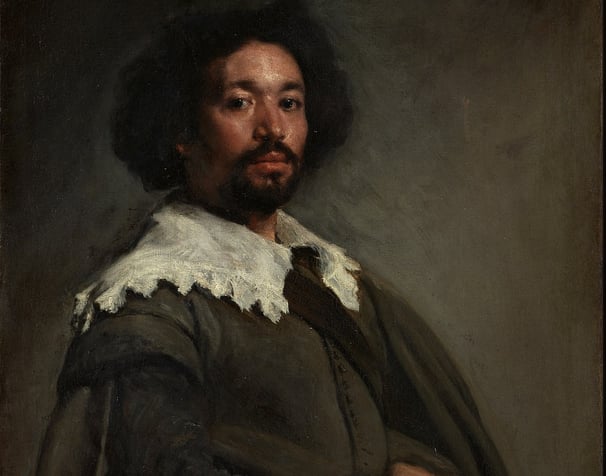The Untold Tale of Juan de Pareja
A Portrait of Artistic Prowess
Walid Ghali
10/26/20233 min read


In my fascination with art history, I've often been captivated by intriguing figures like Juan de Pareja. A portrait of a Moorish man used to be my profile picture, and people would inquire about the identity of the person portrayed. To their inquiries, I would reply that he is Juan de Pareja, though some art enthusiasts recognized him as the subject of a famous work by the masterful Diego Velasquez. Yet, for me, Juan de Pareja represented more than just a captivating portrait; he embodied an extraordinary life story.
But before as I dive into the rich tapestry of art history, Juan de Pareja's narrative remains a poignant reminder of the enduring allure of art and the stories it weaves through the ages. Moreover, I had the privilege of creating a portrait of Juan de Pareja with AI, drawing inspiration from the styles of Klimt, Mucha, and channeling the spirit of Velasquez himself. This endeavor allowed me to explore the seamless fusion of artistic techniques spanning different eras, resulting in a unique and evocative masterpiece that pays tribute to the enduring legacy of this remarkable figure and the artistry that continues to inspire.
The confusion surrounding when Juan de Pareja met Velasquez only adds to the mystique of this historical figure. It is believed that he accompanied Velasquez on his journey to Italy, where the masterful artist created a portrait that would ultimately convince Pope Innocent X to grant Velasquez the privilege of painting him. The result? One of the most exquisite and renowned portraits in the annals of art history.
Juan de Pareja's life journey from servitude to prominence is a testament to the profound and transformative power of art. His story, entwined with the remarkable talents of Diego Velasquez, serves as a remarkable example of how art transcends time and societal boundaries, leaving an indelible mark on history.


Born in 1606 in Antequera, Spain, Juan de Pareja lived during a period when the art world was flourishing. He was born into a world characterized by dichotomies – a world marred by racial inequalities and societal prejudices. Juan, a Moorish slave, belonged to the household of the renowned artist Diego Velázquez, and in 1654 he was freed by Velázquez
Juan was not destined to be a mere footnote in history. Under Velázquez's watchful eye, he transcended the confines of his time. It was within the confines of Velázquez's studio that Juan's artistic talents emerged. He was not just an assistant but a dedicated and astute learner, absorbing the skills, techniques, and secrets of the trade.
One of Juan's most famous works was a self-portrait, a masterpiece that not only showcased his technical proficiency but also represented his desire to be recognized as an artist in his own right. This self-portrait is a testament to his determination and unwavering belief in his craft.
Juan de Pareja's talents were not concealed for long. Velázquez eventually granted him his freedom, allowing Juan to continue his artistic pursuits independently. In this act, Velázquez not only liberated Juan from the bonds of servitude but also helped usher in a new chapter in the world of art.
The legacy of Juan de Pareja is a celebration of artistic ambition, resilience, and the potential for human creativity to transcend societal norms. His journey from the shadows of the art world to a place where he could be celebrated as an artist in his own right is a tale of triumph over adversity.
In honoring Juan de Pareja, we not only celebrate his artistic gifts but also pay homage to his indomitable spirit. His story reminds us that true talent knows no bounds, and that art, in all its forms, has the power to elevate us above our circumstances.
In the grand narrative of art history, Juan de Pareja's name might not shine as brightly as others, but his legacy illuminates a path of inspiration, resilience, and the enduring potential for creativity in the face of adversity.
